WordPress database error: [Got error 28 from storage engine]
SELECT t.*, tt.*, tr.object_id FROM wp_terms AS t INNER JOIN wp_term_taxonomy AS tt ON tt.term_id = t.term_id INNER JOIN wp_term_relationships AS tr ON tr.term_taxonomy_id = tt.term_taxonomy_id WHERE tt.taxonomy IN ('category', 'post_tag', 'post_format') AND tr.object_id IN (1094, 4468, 5130, 5675, 56389, 58942, 59384, 59728, 60309, 61438) ORDER BY t.name ASC
1785 – Beginning Of The Highland Clearances
The clan system regarded the land as belonging to their community, worked areas being passed down through the family while additional lands could be rented. As the generations passed, the clan chiefs became more wealthy and detached from their kinsmen, regarding them as their effects rather than their family. By the 18th century it would have been hard to find a clan chief with the same accent as his clan, and harder still to find a clansman with any legal or humanitarian rights.
Agricultural ‘improvement’ by removing humans from their lands and replacing them with sheep was found to be very profitable across the Lowlands in the mid-1700s. The large Cheviot and Blackface sheep that were given the lands generated more wealth than the landowners could ever have squeezed from their clan tenants.
The people were told to fish at the coast and work the kelp to pay the rents for their new locations. They built themselves homes called crofts and their lifestyles became known as crofting.
The Lowland success encouraged an enormous, devastating ‘improvement’ by the traitor landowners all across the Highlands from 1785 which became known as ‘the Clearances’. Tens of thousands were pulled out of their townships and moved, impoverished, to the marginal areas. Because of the Napoleonic wars, emigration of potential soldiers was not encouraged; and there was money to made from recruits.
Bloodshed and betrayal in the Glens. Man’s inhumanity to man is brought sharply into focus as entire communities are swept away…
The evil Countess of Sutherland, for example, used the threat of clearances to blackmail every young man on her vast estates to enlist in her regiment. She then evicted their families later anyway.
There were two forms of clearance. Firstly came the relocation of people onto poor, coastal plots. From 1820, however, these areas were failing to provide any living. Kelp was not as saleable, fishing was poor yet rents were being pushed up. To cap it all came the 1844 potato famine.
New hardships from the first upheaval induced a second movement of people forced to attempt emigration. As the consequences of relocation were becoming apparent, insatiable landowners were still clearing and selling their estates without regard into the 1850s.
Find out more about The Highland Clearances
The GlenCalvie Clearances
A long drive through beautiful countryside from the small highland village of Ardgay leads down to a small church. Croick church is a pretty building not unlike many other Scottish churches, built from a design by the engineer Thomas Telford. There is little to set it apart, these white hurled walls and manicured churchyards can be seen all over Scotland.
As you walk around the church you pass the east window, small diamond panes of simple clear glass. A step beside the window invites you to look closer so you do, only to discover that each pane contains a small inscribed message; some just a date or a name, others more evocative messages. The careful scripted writing suggests that this is not just youthful graffiti, these are the words of the Glen Calvie residents, evicted from their lands in the infamous Highland Clearances.
» Continue to read about the The GlenCalvie Clearances

Witness account by a Correspondent for The Times
Witness account by a Correspondent for The Times
I returned to this place for the purpose of witnessing the sequel of the clearance of the poor highlanders, out of GlenCalvie, an account of which I sent you some days ago. It will be remembered that 18 poor cottiers living in GlenCalvie, near here, the legal process of turning them out of their homes having been completed, gave bond peaceably to leave on the 24th, after which the value of their stock was to be given to them, and they might go where they listed. It will also be remembered that these 18 families, consisting of 92 individuals, supported themselves in comparative comfort without a pauper amongst them; that the owed no rent and were ready to pay as much as anyone would give for their land, which they and their forefathers had occupied for centuries, but which is seems is now to be turned into a sheep-walk.
» Continue to read about the Witness account by a Correspondent for The Times
Blog Posts about The Highland Clearances

The Voyage of the Hector
Read More

A Victorian View Into Scottish North America: Part Two Of Lady Isabella Bird’s Encounters With Scots In Canada And America
Read More
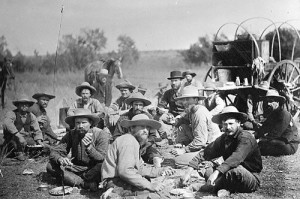
Murdo Mackenzie: The most influential cattleman in America was from Scotland
Read More
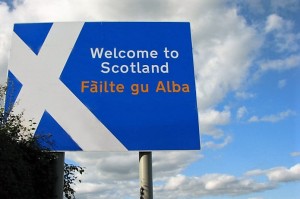
Getting comfortable with Gaelic’s indigenous side – a few things to consider
Read More

“Our children are bred for emigration”
Read More

Dundee Actress Cast for Highland Clearances film
Read More
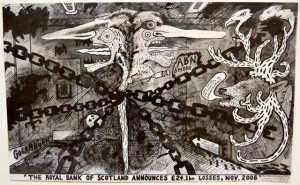
Martin Fowler’s Graphic History of Scotland
Read More
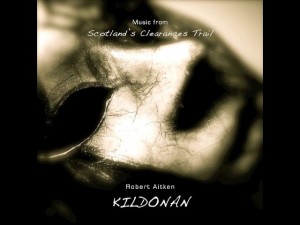
Highland Clearances Influence Composer
Read More

Life On The Edge
Read More
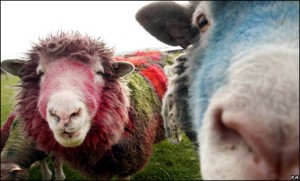
The Year of Sheep – Scots Protest against The Highland Clearances
Read More







